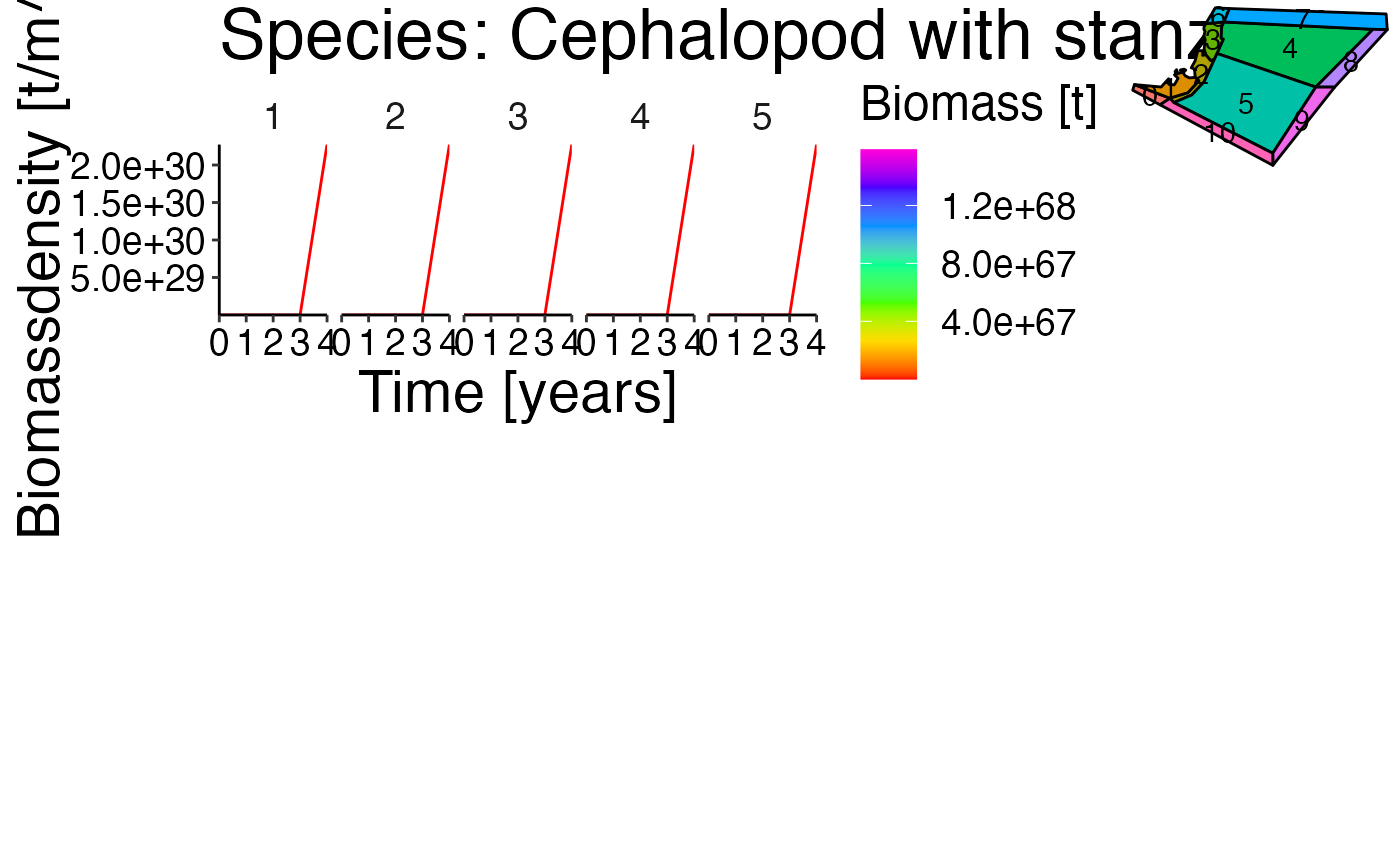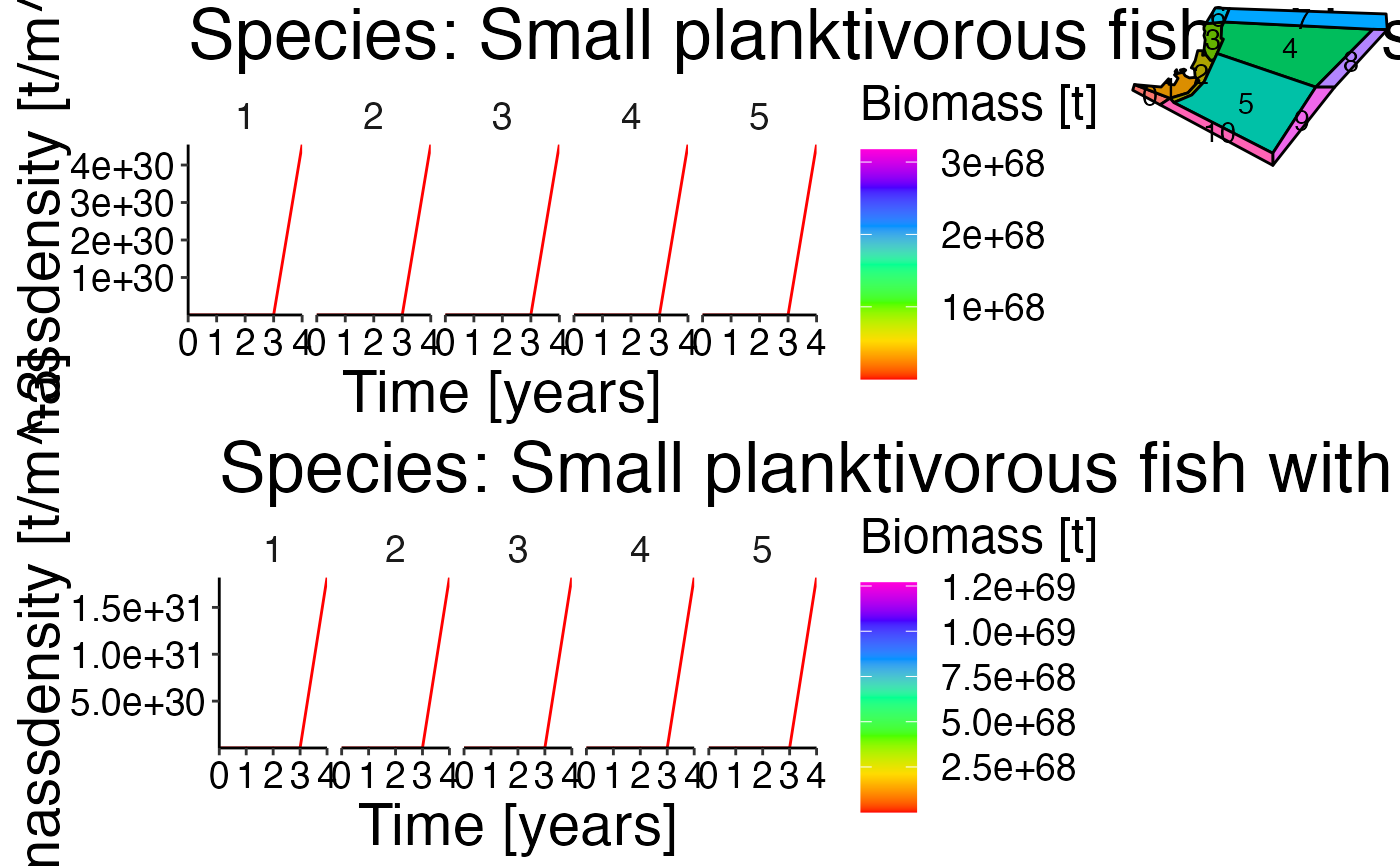Visualize the spatial distribution per species and stanza combination.
Source:R/plot-spatial-ts.R
plot_spatial_ts.RdVisualize the spatial distribution per species and stanza combination.
plot_spatial_ts( bio_spatial, bgm_as_df, vol, select_species = NULL, ncol = 7, polygon_overview = 0.2 )
Arguments
| bio_spatial | Biomass per group and stanza in tonnes for each timestep,
layer and polygon. This dataframe should be generated with
|
|---|---|
| bgm_as_df | *.bgm file converted to a dataframe. Please use |
| vol | Volume per polygon and timestep. See model-preprocess.Rmd for details. |
| select_species | Character vector listing the species to plot. If no species are selected
|
| ncol | Number of columns in final plot. Default is |
| polygon_overview | numeric value between 0 and 1 indicating the size used to plot the polygon overview in the
upper right corner of the plot. Default is |
Value
grob of 3 ggplot2 plots.
Examples
d <- system.file("extdata", "setas-model-new-trunk", package = "atlantistools") bgm_as_df <- convert_bgm(file.path(d, "VMPA_setas.bgm")) vol <- agg_data(ref_vol, groups = c("time", "polygon"), fun = sum, out = "volume") # Spatial distribution in Atlantis is based on adu- and juv stanzas. # Therefore, we need to aggregate the age-based biomass to # stanzas with \code{\link{combine_ages}}. bio_spatial <- combine_ages(ref_bio_sp, grp_col = "species", agemat = ref_agemat)#># Apply \code{\link{plot_spatial_ts}} grobs <- plot_spatial_ts(bio_spatial, bgm_as_df, vol)#>#> #>#> #>

